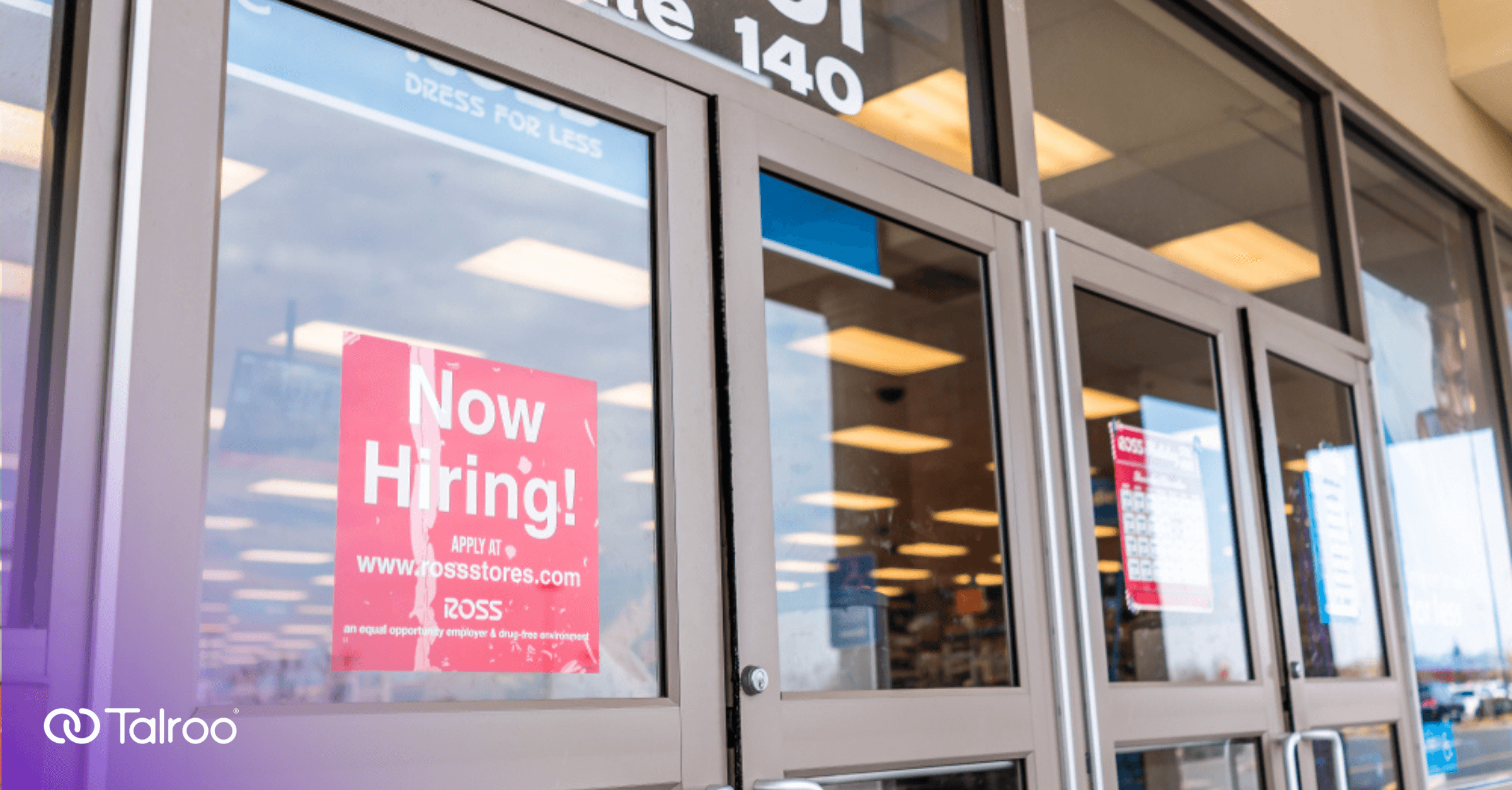
In the early days of the pandemic in 2020, many large retailers discovered that their frontline employees – deemed essential workers – weren’t incentivized to put their health at risk for $8 to $10 an hour on average. While the current administration is working to raise the minimum wage on a federal level, many states are doing the same, however the highest current minimum wage is in the state of Washington at $13.69 an hour.
There were 878,000 job openings in the retail sector in March of 2021, up 53% from the same month last year, and 1.2 million unfilled positions in the leisure and hospitality industry, an 86% increase from last March of 2020, according to data from the Bureau of Labor Statistics. This is the largest worker shortage in a single sector in decades, and retailers are feeling the pressure and the cost of these vacancies.
The Reason(s) It’s So Hard to Hire In Retail Right Now
In a CNN interview in May, Best Buy CEO Corie Barry noted that there are four primary reasons why retailers are struggling to find hourly workers:
- Parents are struggling to find childcare, vaccine not approved for children under 12.
- Health concerns about customer facing roles.
- Retail is among the jobs that have changed most heavily over the last year. Workers became essential front-line workers overnight, unlike those in other industries they couldn’t work from home. Not every retail worker may want to continue to sign up for that as the pandemic continues.
- More competition for staff. Major companies including Under Armour, Amazon, and Walmart have raised their minimum wage to attract workers.
If Best Buy, which raised its starting hourly rate to $15 an hour in the middle of the pandemic (August of 2020) is finding it difficult to attract new candidates, retailers that aren’t as large are experiencing a talent shortage magnified by the limits of company budgets and what they can promise candidates.
Major Retailers Have Stepped Up With Bonuses
It’s not just competing with higher starting salaries. Companies are offering other incentives to frontline workers. In June, Gap Inc announced that it would be distributing $300 bonuses to approximately 70,000 eligible hourly employees in the US, Canada, Japan, UK, the Republic of Ireland and Italy.
Amazon is among the companies that stepped up their bonus programs this year, noting that its warehouse staff was on the job during the pandemic and busier than ever as online purchases replaced in-store shopping. Those employed full time at the online retailer during 2020 qualified for a “special recognition” bonus of $300, while part-time employees received $150.
In December, Walmart announced special cash bonuses will be paid Dec. 24 to its U.S.-based hourly employees, in recognition of their sustained commitment to customers during the pandemic. Walmart’s part-time and temporary hourly employees received $150 and full-time hourly employees will receive $300. More than 60 percent of Walmart’s hourly employees are full-time. This was Walmart’s fourth special cash bonus paid to U.S. staff since the start of the pandemic. Workers also received quarterly bonuses in their Nov. 25 paychecks based on strong third quarter business performance.
Related: Creative Strategies for Hiring in Restaurant & Retail
Your Employees Are Your Best Resource for Talent Acquisition
While bonuses are good for morale, it’s more important that companies find out from their own employees what they want. Talroo’s latest job seeker survey reports that higher wages and flexible schedules are more likely to bring in candidates than one-time bonuses, better benefits, and even safer working conditions.
A Pew Research Center survey this year found that 66 percent of unemployed Americans had “seriously considered” changing their field of work, a far greater percentage than during the Great Recession in 2008. People who used to work in restaurants or retail are finding higher-paying jobs in real estate or other sectors in which their skills translate, for example, and many are actively seeking education and reskilling.
Related: 10 Tips for Attracting Top Seasonal Talent
Now would be a great time to do your own research and send a pulse survey to current employees. Allow them to respond anonymously and ask what your company can do to make its open positions more attractive to candidates. Expect “raise wages” as your primary answer, but pay careful attention to all responses. Income is only one part of the puzzle. A few more:
Flexible schedules.
Flexible scheduling does take more work on the part of management in retail locations, but is essentially a budget friendly way to make these roles more appealing.
Development programs.
Tuition reimbursement or company sponsored career development programs aren’t free, but both meet the needs of employees seeking to move beyond an hourly role in retail into management positions.
Consider your COV.
Reaching more candidates is going to cost companies in the form of a higher recruiting budget, but the cost of vacancy could not only exceed this amount, including the lost customers due to poor service.
We all can’t have recruiting or payroll budgets the size of Best Buy or Walmart, but retailers have the ability to collect data from existing workforces and adapt recruiting strategies, benefits, scheduling, and so on based on what we learn from our current employees. You might discover that simply training your store managers to be better mentors, have more empathy, and create a positive work environment could improve your appeal to job seekers (and this may even vary by store location).




